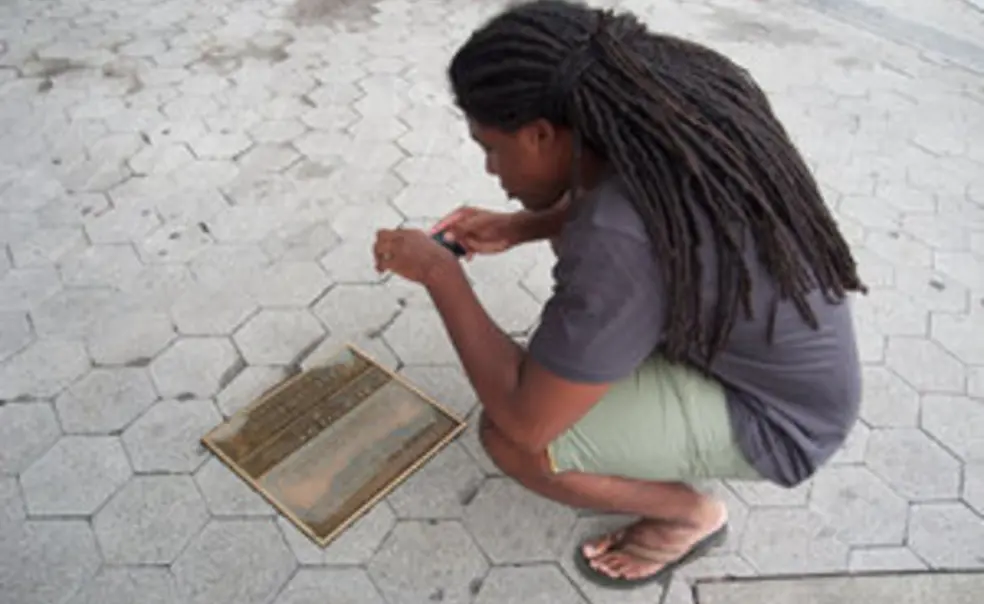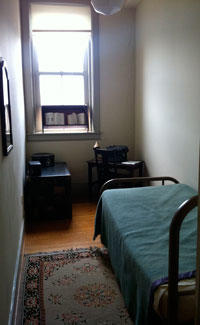Dale winner Morgan '14 follows trail of segregation-era travel guides
Peyton Morgan '14 snaps a photo of a historical marker on Auburn Avenue in Atlanta. (Photo: Cole Morgan)
This is the fifth and final post in our summer series about Dale Award recipients.
âSee how happy I am?â Peyton Morgan â14 said, showing off the picture on his driverâs license. He acquired the license in anticipation of a seven-week summer road trip, during which his only guides were a GPS and The Green Book. The book, published by postal-service worker Victor Green between 1936 and 1964, once served as a guide to hotels, restaurants, and businesses that would serve African-American travelers.
Backed by a Martin A. Dale â53 Summer Award, Morgan followed an itinerary through 15 cities across America as he documented the present state of the locations listed in the book. Undertaking the trip on a newly minted license was daunting (âIâm surprised they let me go!â the Chicago resident said), but his determination drove him â literally â to find meaning in a largely forgotten text.
Searching for the listed establishments, Morgan found little: Only two people he met had heard of The Green Book, and while some buildings still stood, few remained as they had been during the segregation era. Sometimes, all physical evidence had disappeared completely. âThe visit of that day would consist of going to the side of the highway, and realizing that the neighborhood is no longer there,â he said.

One of the stops on Morgan's trip was the Thurgood Marshall Center for Service and Heritage, formerly a black YMCA in Washington D.C., left. Famous travelers including Langston Hughes, Thurgood Marshall, and Charles Drew rented rooms like the one at right during their visits to the city. (Photos: Courtesy Peyton Morgan)
Searching for meaning elsewhere, Morgan closely re-examined The Green Book, thinking past its stated purpose. He was able to make inferences about the intended audience of the book and to think about how their tastes changed between 1936 and 1964 to include previously âforbiddenâ establishments, as local desegregation laws came into effect. âYou realize exactly what theyâre not saying,â he said.
Although Morgan did not experience discrimination to the degree that African-American travelers once did, certain moments gave him a taste. One cheesesteak restaurant he visited in Philadelphia posted a sign that prompted customers to âSpeak English,â which shocked Morgan. âThis is the reason that people had this guide,â he said.
After the Civil Rights Act of 1964 was passed, both The Green Book and its publisher, Victor Green, faded out of the spotlight â even Greenâs date and place of death are unclear. Morgan believes that answers to questions about Greenâs life after the Book will shed light on more such deeper meanings of the text as he sought. âWhy did he stop so abruptly?â Morgan asked. âWhy was he under the impression that racism would stop?â

Eric Silberman â13 is a molecular biology major from Lincolnwood, Ill.














No responses yet